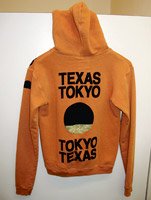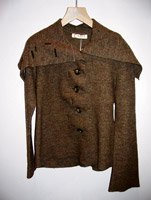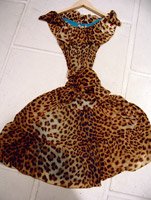Brentwood Favors Basics With Style
The Los Angeles neighborhood of Brentwood stands out. The people calling it home include Gov. Arnold Schwarzenegger, former Los Angeles Mayor Richard Riordan and film director Steven Spielberg.
But when it comes to fashion, this wealthy neighborhood is not so different from the rest of Los Angeles. Brentwood women prefer the basics of West Coast fashion—T-shirts, hooded sweaters and denim—according to Suleka Cole, manager of the Ron Herman boutique at the Brentwood Gardens shopping center.
“It’s a family-oriented neighborhood,” Cole said of Brentwood. “Women who have children wear functional clothes on a daily basis. It’s jeans and T-shirts.”
The top-selling brands at Ron Herman are the house labels that give a fashion edge to basics. Hooded sweaters manufactured by Ron Herman’s Free City label have been popular. A unisex hoodie costs $168.
Also popular are the hooded sweaters manufactured by John Eshaya’s Ts, designed by Ron Herman/Fred Segal vice president and women’s buyer John Eshaya. The hoodie retails for $88.
While the neighborhood prefers the basics, clothes to be worn at a special occasion are important, too. Another garment with high sales at Ron Herman is a mod tunic dress manufactured by the label Miss Davenporte, the line founded by Los Angeles stylists Cristina Ehrlich and Estee Stanley. It retails for $515.
The Ron Herman boutique has been doing business at Brentwood Gardens for more than 15 years, and Cole said that 80 percent of her clients are women from the neighborhood. The adjacent boutique, Theodore, serves a similar clientele, said store manager Jane Weinberg. Brentwood Gardens “offers a lot of convenience. People don’t have to drive all the way to Beverly Hills,” Weinberg said.
Basics are all the rage at Theodore, too, but these basics often have a rock ’n’ roll flair. Top-selling brands include the tunics by Great China Wall. The brand, which has been favored by heavymetal rock bands such as Korn, embellishes its tunics with details such as leather appliqueacute;s and tunics with Swarovski crystals. The style retails for $620.
Weinberg also may be seeing some new trends in denim. A top-selling jean at Theodore is not the skinny, low-cut denim pant that has been a requirement for almost every wardrobe for the past season. One of Theodore’s popular jeans is manufactured by Los Angeles–based Goldsign. The $180 jeans have a high rise and a wide leg. “It’s a new silhouette,” Weinberg said.
Also doing well are the fashionable but functional clothes from Los Angeles–based label Da Nang, whose Henley T-shirt retails for $60, and velour hooded sweaters and pants produced by Theodore’s private label, which also bears the name of the store.
Designers are also important here. A leopard skin–print silkchiffon dress manufactured by Italian-based label Blumarine has been popular at Theodore. It retails for $895.
Jackets constructed out of thin leather, perfect for Los Angeles sunshine, were highly popular during the 2006 holiday season, Weinberg said. Jackets from labels such as Nigel Preston Leather had price points ranging from $700 to $2,500.
Leather jackets by Italian-based label Santa Croce have been a favorite at Brentwood Gardens boutique Gaia. The boutique sold out of the black leather jacket with a tab “Members Only” collar. It costs $1,600, said store manager Crystal Adams.
Jeans brands doing well are the men’s waxed-denim pant by Italian brand Notify, which retails for $247. A high-waisted, straightlegged jean by its sister label, NFY, does well. It costs $152. Lavendercolored Oxford shirts by Italian-Canadian label DSquared2 are popular. The shirt, which features a wide white collar, retails for $425.
A wool coat with asymmetric buttons and a shawl collar by Danish label Casch retails for $220 and sells well at Gaia, Adams said. Adams noted that while Brentwood loves its basics, there is room for what is different.
“Most of our clients are women aged in their late 20s to late 40s. They’re looking for something you can’t find anywhere. They are trendy, and they are not price-conscious.”
























